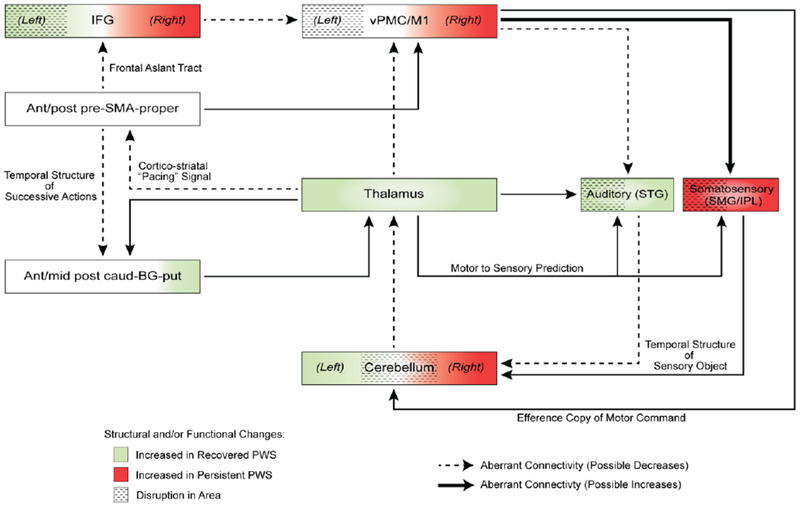Figure 6.

A plausible neural framework relevant to stuttering risk, persistence, and recovery. Neural structures critical for sensorimotor integration for speech planning and production interface with subcortical structures that provide temporal structure and enable internal timing of speech sound production. Colors and thickness of lines are hypothetical, based on previous reported findings in the literature. Modified based on a subcortical-cortical model proposed by Kotz and colleagues, this model provides a useful framework that incorporates most convergent empirical findings to date on neural deficits linked to stuttering. Elucidating the functional and structural connectivity among component areas and causal relationships represented here could lead to novel insights into possible neural mechanisms linked to stuttering. BG: basal ganglia; caud: caudate; CE: cerebellum; IFG: inferior frontal gyrus; M1: primary motor cortex; PMC: premotor cortex; put: putamen; PWS: people who stutter; SMA: supplementary motor area; SMG/IPL: supramarginal gyrus/inferior parietal lobe; STG: superior temporal gyrus; vPMC: ventral premotor cortex.
